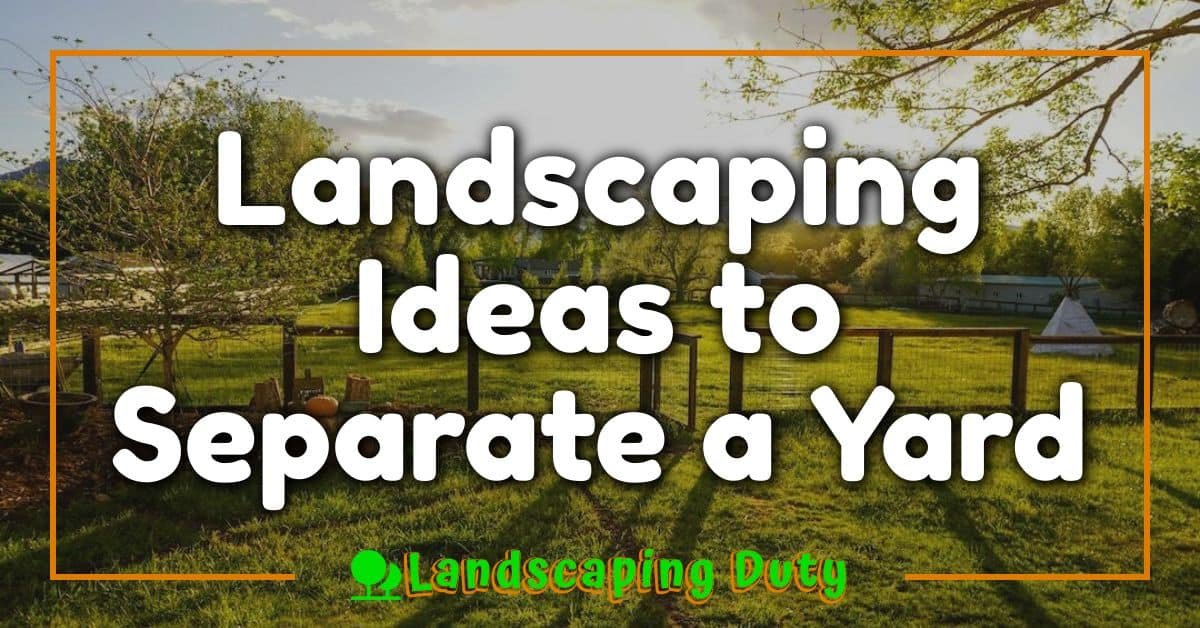If you’re planning on using gravel in your landscape, you may want to consider using landscape fabric to help prevent weeds from growing through. However, you may be wondering how long landscape fabric lasts under gravel and whether it’s worth the investment.

Landscape fabric is a permeable material that is designed to allow water and air to pass through while preventing weeds from growing. It is typically made from a woven or non-woven material and is available in a range of thicknesses and grades. When installed correctly, landscape fabric can be an effective way to control weeds and reduce maintenance in your landscape.
So, how long does landscape fabric last under gravel? The answer depends on a variety of factors, including the quality of the fabric, the thickness of the gravel layer, and the amount of foot traffic or weight that the fabric is subjected to. In general, landscape fabric can last anywhere from a few years to a decade or more, depending on these factors. In the following sections, we’ll delve deeper into the topic of landscape fabric and explore some key considerations when using it in your landscape.
Key Takeaways
- Landscape fabric can be an effective way to control weeds and reduce maintenance in your landscape.
- The lifespan of landscape fabric under gravel depends on several factors, including the quality of the fabric, the thickness of the gravel layer, and the amount of foot traffic or weight that the fabric is subjected to.
- Proper preparation, installation, and maintenance can help extend the lifespan of landscape fabric in your landscape.
Understanding Landscape Fabric

https://www.youtube.com/watch?v=Q19UoV1v2rQ&embed=true
If you’re planning on installing a gravel pathway, patio, or driveway, you may be wondering if you should use landscape fabric underneath the gravel. Landscape fabric is a type of material that is designed to help control weeds and prevent soil erosion. Here’s what you need to know about landscape fabric before you decide whether or not to use it for your project.
Types of Landscape Fabrics
There are two main types of landscape fabric: woven and non-woven. Woven landscape fabric is made from polypropylene or polyester threads that are woven together to create a strong, durable material. Non-woven landscape fabric, on the other hand, is made from a blend of polyester and linen fibers that are fused together. Biodegradable landscape fabric is also available, which is made from natural materials like jute or hemp.
Benefits of Using Landscape Fabric
There are several benefits to using landscape fabric. First and foremost, it can help control weeds by preventing them from growing through the gravel and into the soil. Additionally, landscape fabric can help prevent soil erosion by keeping the soil in place. It can also help improve drainage by allowing water to pass through the fabric and into the soil below.
Common Misconceptions About Landscape Fabric
There are some common misconceptions about landscape fabric that you should be aware of before you decide to use it. One of the biggest misconceptions is that landscape fabric will completely eliminate weeds. While it can certainly help control weeds, it won’t completely eliminate them. Additionally, some people believe that landscape fabric will prevent all soil erosion, but it’s important to note that it won’t be effective in areas with heavy water flow.
Overall, landscape fabric can be a useful tool in controlling weeds and preventing soil erosion. However, it’s important to choose the right type of fabric for your project and to have realistic expectations about its effectiveness.
Preparation and Installation

Before installing landscape fabric under gravel, you need to prepare the site properly. This includes removing any existing vegetation, rocks, and debris from the area. Once you have cleared the site, make sure the soil is level and free of any large rocks or roots that could puncture the fabric.
Site Preparation
It is important to properly prepare the site before installing landscape fabric under gravel. Start by removing any existing vegetation, rocks, and debris from the area. If you are working with a larger area, consider using a tiller to loosen the soil and remove any roots or rocks.
Once you have cleared the site, make sure the soil is level and free of any large rocks or roots that could puncture the fabric. You can use a rake to smooth out the soil and remove any small rocks or debris.
Installing Landscape Fabric
After preparing the site, it is time to install the landscape fabric. Start by laying the fabric over the prepared soil. Make sure the fabric is large enough to cover the entire area, with some excess fabric around the edges to allow for securing.
Securing the Fabric
Once the landscape fabric is in place, it is important to secure it properly. This can be done using landscape staples, pins, or landscape pins. These can be hammered into the ground to hold the fabric in place.
When installing landscape fabric under gravel, it is important to use a high-quality weed barrier. This will help prevent weeds from growing through the fabric and into your gravel. Additionally, regular maintenance is important to ensure the fabric remains effective. This may include removing any debris that accumulates on the fabric, as well as periodically checking for any tears or punctures that may have occurred.
Landscape Fabric and Plant Health

When it comes to using landscape fabric under gravel, you may wonder about its impact on plant health. Here are some of the ways that landscape fabric can affect soil nutrients, water drainage, soil moisture, root growth, and plant development.
Impact on Soil Nutrients
Landscape fabric can help to prevent weeds from growing in your gravel pathway or driveway. However, it can also prevent earthworms and other beneficial soil organisms from accessing the soil. Earthworms and other organisms help to aerate the soil, break down organic matter, and release nutrients for plant uptake. Therefore, if you use landscape fabric, you may need to add soil amendments or fertilizer to maintain soil health.
Water Drainage and Moisture Retention
Landscape fabric can help to prevent water from seeping into the soil, which can be both a good and bad thing. On one hand, it can help to prevent erosion and soil compaction. On the other hand, it can also lead to waterlogging and poor drainage. To avoid this, make sure to use a high-quality landscape fabric that allows for adequate water drainage and moisture retention.
Root Growth and Plant Development
Landscape fabric can also impact root growth and plant development. If the fabric is too thick or tightly woven, it can prevent roots from penetrating the soil and accessing nutrients. This can lead to stunted growth and poor plant development. To avoid this, use a landscape fabric that is breathable and allows for root growth.
Overall, landscape fabric can be a useful tool for preventing weeds and maintaining soil health. However, it is important to choose the right type of fabric and use it correctly to avoid negative impacts on plant health.
Weed Control and Maintenance

« What to Wear for a Landscaping Job: Tips and Tricks Is Landscaping Worth the Money? A Friendly Guide to Weighing the Pros and Cons »
If you’re using landscape fabric under gravel, one of the primary benefits is weed control. Here are some things to keep in mind when it comes to controlling weeds with landscape fabric.
Effectiveness Against Weeds
Landscape fabric is an effective way to control weeds under gravel. It creates a barrier that prevents weed seeds from germinating and growing. However, it’s important to note that landscape fabric is not 100% effective. Weed seeds can still blow in from nearby areas, and debris can accumulate on top of the fabric, providing a place for weeds to grow.
Maintaining the Weed Barrier
To ensure that your landscape fabric continues to effectively control weeds, it’s important to maintain it properly. This includes regularly removing any debris that accumulates on top of the fabric, as well as periodically checking for any tears or holes in the fabric. If you do find any tears or holes, it’s important to repair them as soon as possible to prevent weeds from growing through.
Alternatives to Landscape Fabric
If you’re not a fan of landscape fabric, there are other options for controlling weeds under gravel. One option is to use organic mulch, such as newspaper or cardboard, under the gravel. This will break down over time and provide nutrients to the soil, while also helping to prevent weeds from growing. Another option is to use an inorganic mulch, such as pea gravel or crushed stone, which will also help to prevent weeds from growing.
Overall, landscape fabric is a great option for controlling weeds under gravel. With proper maintenance, it can last for several years and provide an effective barrier against weeds. However, it’s important to keep in mind that it’s not 100% effective, and you may still need to do some weeding from time to time.
Longevity and Replacement

When installed properly, landscape fabric can last for many years, but its longevity depends on several factors. Here are some factors that affect the durability of landscape fabric:
Factors Affecting Durability
- UV Protection: The sun’s ultraviolet (UV) rays can break down landscape fabric over time. Look for landscape fabric that is UV-resistant to ensure it lasts longer.
- Climate: The climate you live in can also affect the lifespan of landscape fabric. Extreme heat or cold, high humidity, and heavy rainfall can all cause the fabric to deteriorate faster.
- Quality: The quality of the landscape fabric you choose can also determine how long it lasts. Higher quality fabrics tend to be more durable and can last longer.
- Mold and Mildew: If your landscape fabric is exposed to moisture, it can develop mold and mildew, which can weaken the fabric and shorten its lifespan.
- Biodegradability: Some landscape fabrics are biodegradable, which means they will break down over time. While this may be good for the environment, it also means the fabric will not last as long as non-biodegradable options.
When to Replace Landscape Fabric
Even with proper installation and care, landscape fabric will eventually need to be replaced. Here are some signs that it’s time to replace your landscape fabric:
- Visible Wear and Tear: If you notice visible holes, tears, or fraying in your landscape fabric, it’s time to replace it.
- Weeds: If weeds are growing through your landscape fabric, it may be time to replace it. This could indicate that the fabric has deteriorated or that it was not installed properly.
- Mold and Mildew: If you notice mold or mildew on your landscape fabric, it’s time to replace it. Not only can mold and mildew weaken the fabric, but it can also be harmful to your health.
- Age: Even if your landscape fabric appears to be in good condition, it may still need to be replaced if it’s been several years since it was installed.
Disposal and Environmental Considerations
When it’s time to replace your landscape fabric, it’s important to dispose of it properly. If you used a non-biodegradable fabric, it should be disposed of in the trash. If you used a biodegradable fabric, you may be able to compost it or dispose of it in a landfill. Check with your local waste management facility for specific guidelines.
When choosing a replacement landscape fabric, consider the environmental impact of your choice. Look for options that are made from sustainable materials and that are biodegradable if possible. This can help reduce the amount of waste in landfills and minimize the impact on the environment.
Landscape Design Considerations

When it comes to designing your landscape, there are several considerations to keep in mind. One of these is the use of landscape fabric, which can be a useful tool in preventing weed growth and improving drainage. Here are some things to keep in mind when incorporating fabric into your landscape design.
Incorporating Fabric into Garden Beds
If you’re planning to use landscape fabric in your garden beds, there are a few things to keep in mind. First, make sure to choose a high-quality fabric that will last for several years. You should also consider using a fabric that is permeable, so that water can still reach the soil beneath.
Using Fabric Under Gravel and Rock
Using landscape fabric under gravel or rock can also be a good idea, as it can help to prevent weed growth and improve drainage. However, it’s important to choose the right type of fabric for this application. Look for a fabric that is specifically designed for use under gravel or rock, as this will be more durable and effective.
Aesthetic Integration and Borders
When incorporating landscape fabric into your design, it’s important to consider the aesthetic impact as well. You may want to choose a fabric that blends in well with your existing landscaping, or consider using decorative borders to help integrate the fabric into your design.
Overall, landscape fabric can be a useful tool in your landscaping toolkit, but it’s important to use it in the right way and choose the right type of fabric for your needs. By keeping these considerations in mind, you can create a beautiful and functional landscape that will last for years to come.
Practical Tips for Homeowners

As a homeowner, you want to ensure that your yard is always looking its best. One way to achieve this is by using landscape fabric under gravel. Here are some practical tips to help you get the most out of your landscape fabric:
Cost-Effective Strategies
If you are looking for an inexpensive way to keep your yard free of weeds, landscape fabric is a great option. It is much cheaper than hiring a landscaper to manually weed your yard, and it can save you a lot of time and money in the long run. Additionally, permeable landscape fabric allows water to filter through, reducing the need for irrigation and saving you money on your water bill.
DIY Installation and Maintenance
Installing landscape fabric is a simple DIY project that can be completed in a weekend. First, clear the area of any weeds or debris. Then, lay the fabric over the area and secure it with landscaping pins. Finally, cover the fabric with gravel. With proper maintenance, your landscape fabric can last up to 10 years or more.
To maintain your landscape fabric, it is important to regularly inspect it for any tears or holes. If you do find any damage, patch it up immediately to prevent weeds from growing through. Additionally, be sure to remove any debris or leaves that may accumulate on top of the fabric, as this can provide a breeding ground for weeds.
Selecting the Right Fabric for Your Needs
Not all landscape fabrics are created equal. When selecting a fabric, consider the type of soil in your yard, the amount of foot traffic the area receives, and the type of weeds you are trying to control. For example, if you have heavy clay soil, you may want to consider a heavier weight fabric to prevent it from tearing. Similarly, if the area receives a lot of foot traffic, you may want to opt for a more durable fabric.
When it comes to weed control fabric, be sure to select a high-quality product that is designed to last. Cheaper fabrics may break down quickly, allowing weeds to grow through. Look for fabrics that are made from high-quality materials and are designed to be permeable, allowing water to filter through while still preventing weeds from growing.
Frequently Asked Questions

What is the typical lifespan of landscape fabric when used beneath gravel?
The lifespan of landscape fabric can vary depending on the quality of the fabric, environmental conditions, and maintenance practices. On average, landscape fabric can last anywhere from 5 to 10 years when used beneath gravel [1].
Can landscape fabric effectively prevent weed growth when placed under gravel?
Yes, landscape fabric can effectively prevent weed growth when placed under gravel. It acts as a barrier between the soil and the gravel, preventing weeds from growing through. It is one of the most versatile products available for gardeners and is often used to prevent weeds from growing in gardens, landscaping beds, and planters [1].
Should I place soil on top of landscape fabric before adding gravel?
No, you should not place soil on top of landscape fabric before adding gravel. The purpose of the landscape fabric is to prevent weeds from growing through the gravel, and placing soil on top of it defeats the purpose. It is recommended to lay landscape fabric directly on top of the soil before adding the gravel [2].
What is the best type of landscape fabric to use under gravel for long-term durability?
The best type of landscape fabric to use under gravel for long-term durability is a heavy-duty, woven fabric made from polypropylene. This type of fabric is strong, durable, and resistant to tears and punctures. It is also permeable, allowing water to drain through while still preventing weeds from growing [1].
How often should landscape fabric be replaced when it’s used under a gravel driveway?
Landscape fabric should be replaced when it begins to deteriorate and lose its effectiveness. The lifespan of landscape fabric can vary depending on the quality of the fabric, environmental conditions, and maintenance practices. On average, landscape fabric can last anywhere from 5 to 10 years when used beneath gravel [1].
Does heavy-duty landscape fabric help prevent soil erosion underneath gravel?
Yes, heavy-duty landscape fabric can help prevent soil erosion underneath gravel. It acts as a barrier between the soil and the gravel, preventing the soil from washing away during heavy rain or wind. This can help to maintain the stability of the driveway or pathway and prevent damage to the surrounding landscape [3].















